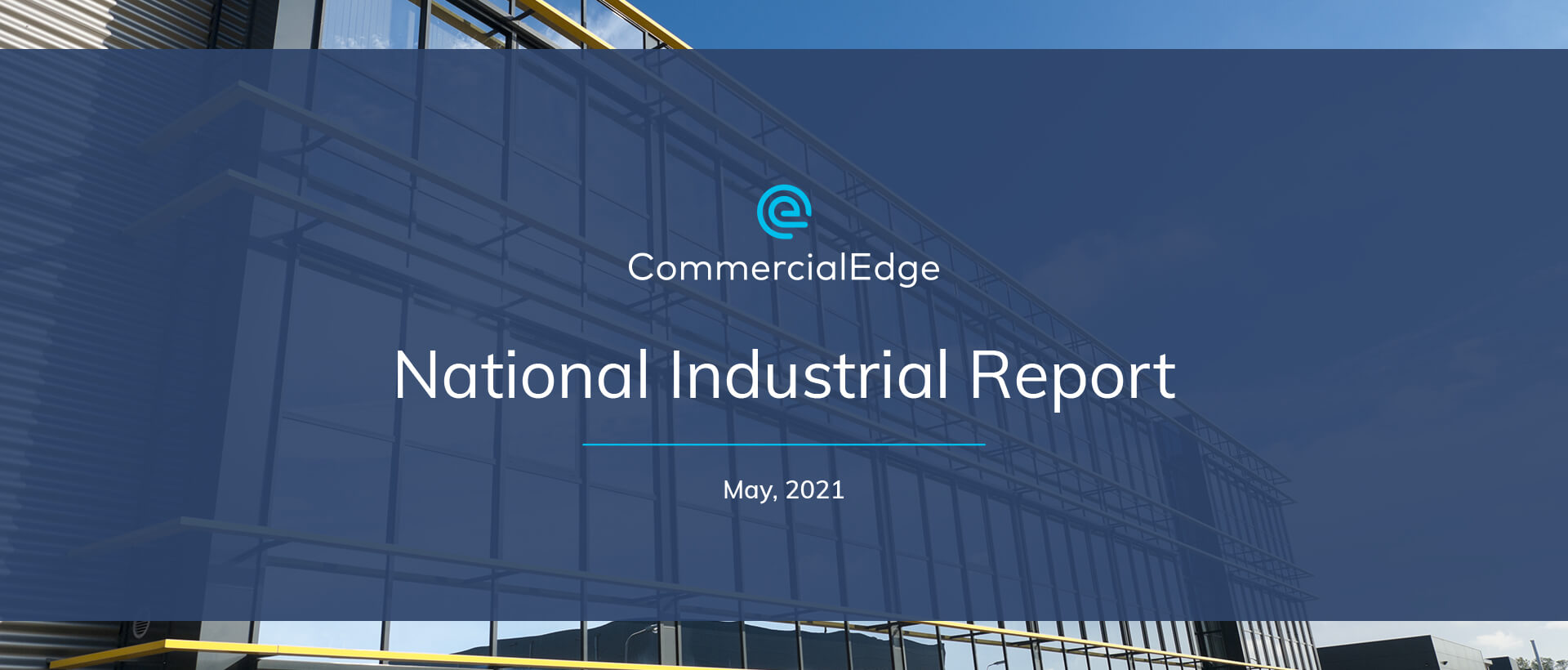Key Takeaways:
- April’s national average rent climbed to $6.54 per square foot
- Port markets of Los Angeles, Inland Empire and Seattle experienced highest growth in rent
- Vacancy rate remained steady at 6.1% as new construction was absorbed to meet demand
- Industrial transaction volume in Los Angeles crossed $1 billion
- 57% of the nearly 400 million square feet of new supply was in top 20 markets
LA, Inland Empire & Seattle See Highest Rent Growth in 12 Months
National average rates for industrial real estate grew 4.7% year-over-year (Y-o-Y) in April, climbing to $6.54 per square foot. However, the coastal cities saw more growth than Midwestern cities, and some of the highest rental rates in the country are along California’s coast. The essential Port of Los Angeles, adjoining Port of Long Beach and Los Angeles International Airport are largely responsible for rates rising to nearly $10 per square foot in the region, as well as a vacancy rate of just 4% as e-commerce continues its expansion.
By comparison, inland cities were more stable. For instance, Kansas City, Mo., and Denver grew very little in the last year — just 1.5% and 1.3%, respectively. But Chicago’s rent growth is a bright point for the region, with April rents here rising 3.3% Y-o-Y to $5.29 per square foot. Part of this stability is due to the availability of developable land.
Similarly, the spread between average overall rents and new leases shows that port cities are seeing the highest prices — nationally, recent leases averaged 15% higher than the overall average rent — but there are some inland exceptions. For example, in Chicago, the average rate of new leases signed in the last 12 months was $6.89 — a 30% premium to the average reported rate for the market in April. Meanwhile, the northeastern port cities of Boston and New Jersey also saw recent leases going for high premiums — 33% and 37%, respectively.
Across the country, Orange County maintained its status as the most expensive market by actual price, with industrial real estate here commanding $10.79 per square foot last month. Not far behind, the Bay Area averaged $10.47 per square foot for industrial leases last month as the second-most expensive industrial market in the country.
Driven by Consistent Demand, National Industrial Vacancy Rates Remain Steady
At the same time, national vacancy remained quite steady at 6.1% last month as the increased demand for industrial space seems to be being met with new supply coming online. Even so, the vacancy rate varied across the markets we surveyed — ranging from 2% in Inland Empire to 11.4% in Boston through the end of April.
What’s more, the ports of Los Angeles and Long Beach continue to see record month after record month, in part because e-commerce has continued the upward trajectory that it has been on for the past year. As a result of this tightening of space availability and typically high cost of land, new supply will be slower to come to market, thereby further increasing rents. Additional details on individual market vacancy rates and lease spreads are available by downloading the full report at the bottom of this page.
LA Volume Surpasses $1 Billion, Miami Transactions Near Last Year’s Volume
$13.2 billion in transactions have closed as of April 30th across the U.S. industrial markets we tracked for our latest report. While Q1 ended with $8.1 billion in sales, April was a busy month, closing another $5.1 billion in transactions. The sale price per square foot for industrial space kept climbing in April 2021 as well — 22% higher year-over-year. On average, U.S. industrial assets traded for $109 per square foot last month.
Notably, investor interest in Los Angeles remained high as the total transaction volume for the market crossed $1 billion in April. Likewise, the adjacent Inland Empire was right behind LA with $854 million in volume already this year. Plus, with these same markets recording the largest 12-month rental rate increases nationwide, investor appetite for these assets is expected to remain strong for the foreseeable future.
On the opposite coast, Miami’s transaction volume has also exploded this year with $439 million in transactions in just the first four months of the year — already 83% of last year’s total volume. A significant portion of this volume was CenterPoint Properties’ acquisition of Countyline Corporate Park in Hialeah. The deal highlights the appeal of properties with in-place leases and large tenants as the property is fully leased by Home Depot.
DFW Delivering 26 Million Square Feet, Kansas City & Denver Continue Expanding Outward
In April, there was 388.7 million square feet of new industrial space under construction across the country. Of this, 57% is located in the top 20 markets, with 26.6 million square feet set to come online in the Dallas-Fort Worth metroplex alone — representing 3.3% of its existing industrial stock. Further north, Chicago is adding the second-highest amount of industrial square footage and is set to deliver another 18.8 million square feet this year.
Part of the reason for softer prices in the more inland markets is the availability of developable land near major Midwestern logistics hubs — like in Kansas City, where developers can build quickly to meet demand. Currently, there’s more than 8 million square feet of industrial space under construction in Kansas City with another nearly 23 million planned for the near future. Similarly, prices in Denver remain soft as the city is set to deliver more than 9 million square feet of industrial space this year.
Data collected for this report also showed that nearly 450 million square feet of industrial property was in the planning stages, and forecasts point to a steady annual yield of between 250 and 350 million square feet through 2026.
Download the full May 2021 report for a full picture on how U.S. industrial markets fared through April 2021, including insights on industry and economy recovery fundamentals.

For an even deeper dive into industrial fundamentals, supply forecasts and the overall effect of the pandemic, learn more from CommercialEdge Senior Research Manager, Peter Kolaczynski, and Yardi Matrix Vice President, Jeff Adler, who participated in the recent Industrial & Office National Outlook Webinar.
Methodology
The monthly CommercialEdge national industrial real estate report considers data recorded throughout the course of 12 months and tracks top U.S. industrial markets with a focus on average rents; vacancies (including subleases but excluding owner-occupied properties); deals closed; pipeline yield; and forecasts, as well as the economic indicators most relevant to the performance of the industrial sector. For a detailed methodology, download the full report above.
Stay current with the latest market reports and CRE news:
Latest Posts
Recent Reports
AI-Fueled Data Center Boom Faces Growing Investor Doubts
Generative AI has made massive leaps in recent years, driving a demand boom for data centers. However, AI firms face an array of challenges.
CBD Office Markets Struggle Amid High Vacancies, Discounted Sales and Slowed Development
Central business districts continue to struggle as declining listing rates and high vacancy levels persist.
E-Commerce Growth Fuels Demand for Industrial Space
While tariff uncertainty may create instability for the industrial sector in the near term, e-commerce will continue to drive industrial demand growth.







